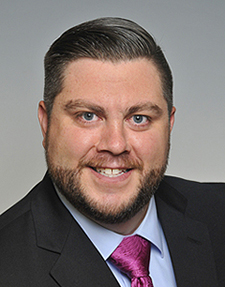
MinnPost’s Daily Newsletter
The latest on the politics and policy shaping Minnesota.
Delivered straight
to your inbox.
Cityscape | Twin Cities urban geographer Bill Lindeke weighs in on city life, transportation, planning and more in his column delivered to your inbox weekly.
Fall is a significant time for new opportunities, whether it’s students starting a new grade, college or trade school, or recent grads joining the military or beginning a full-time career. For second-year medical residents — specifically those working in emergency medicine — it’s a key time for planning ahead for a year from now and considering if a fellowship is right for them.
Not a medical student or resident or related to one? Stick with me, because the caliber of our emergency medical professionals, particularly our EMS first responders, impacts all of us. The good news for all of us here in Minnesota is that our state is home to three exceptional and accredited Emergency Medical Services (EMS) fellowship programs at Hennepin Healthcare, Mayo and Regions.
While some residents may head straight into the job market — usually as emergency room physicians — once completing their residency, passing their boards, and securing state medical licensure, others opt to take a year to develop a sub-specialty, like EMS. It’s one of the smartest moves an emergency medicine physician can make.
Why an EMS subspecialty? Because while an emergency physician is familiar with EMS, there’s a big difference between what takes place in a hospital setting, and what we’re experiencing every day in the field — in the back of the ambulance, in patients’ homes and on the street. Understanding the hands-on fieldwork is essential to a career in emergency medicine, yet EMS was only recognized as a subspecialty of emergency medicine in 2010.
Ahead of the curve, our Hennepin EMS (HEMS) Fellowship Program was founded in 1996 because Hennepin Healthcare is a preeminent teaching institution, and our state-of-the-art Level 1 Adult and Pediatric Trauma Center and the residents and visitors in our region deserved advanced response and care. We received accreditation in 2013.
This is the time for this type of career exploration. It’s during their few years of residency — before they fully commit to a career or subspecialty — when aspiring emergency medicine physicians take an additional year of training to earn a competitive salary while acquiring best-in-class clinical, administrative and field experience. This year includes dedicated ambulance service, regional partnership with fire, police and air transport, specialized field experience, pioneering emergency services and leadership and teaching opportunities, plus training and use of a dedicated response vehicle, all while responding to the needs of more than 90,000 prehospital patients.
Beyond the range and quality of training and experiences, fellows get to choose their own adventure. For example, every fellow is required to experience flight EMS, but after that initial training, if it’s not for them, they move on. But if it is their niche, they might be in a helicopter every week.
Or consider Dr. Aaron Robinson, one of the first fellows I instructed. He enjoyed research and critical care, and is now core faculty in our program. Another fellow, Dr. Alec Bunting, was keen on paramedic education — training medics and firefighters. Today, he specializes in prehospital education and is also a faculty member. Both are examples of how fellowships help people uncover new interest areas and deepen their passion for emergency medicine.

 Dr. Gregg A. Jones
Dr. Gregg A. Jones
Important to the fellowship experience is the fact that EMS today is more than just medical services. It’s public health, policy, community education and beyond. There’s immense value for our fellows in developing relationships with the people and agencies that are critical to our work — from police and fire chiefs to politicians and neighborhood leaders. Together, we’re shaping the policies and protocols that our community relies on and benefits from every day.
Upon completion of the EMS fellowship program, a graduate is well-qualified to become an EMS medical director, instruct prehospital providers, respond to incidents in the field, and become an expert in disaster preparedness, among a variety of other specializations based on their passions and honed skills.
Whether someone you know would benefit from a HEMS fellowship or not, you can take great comfort and pride in knowing that the EMS care team you might need one day is the best there is.
Editor’s note: Hennepin EMS is accepting fellowship applications now through late summer for the fall 2025/2026 academic year. Last year, only 84 people competed for 120 fellowship spots nationwide.
Dr. Gregg A. Jones is the Hennepin EMS Fellowship program director and assistant medical director.
Want to add your voice?
If you’re interested in joining the discussion, consider writing a Community Voices commentary or counterpoint. (For more information about Community Voices, see our Submission Guidelines.)
Related
Source link : http://www.bing.com/news/apiclick.aspx?ref=FexRss&aid=&tid=66f559de6e8e42c8b5bb2f7b94691eb3&url=https%3A%2F%2Fwww.minnpost.com%2Fcommunity-voices%2F2024%2F09%2Fwhy-it-matters-that-minnesota-leads-the-way-in-ems-fellowship-programs%2F&c=13299452495231445989&mkt=en-us
Author :
Publish date : 2024-09-26 00:00:00
Copyright for syndicated content belongs to the linked Source.